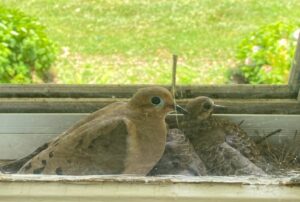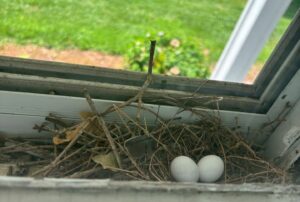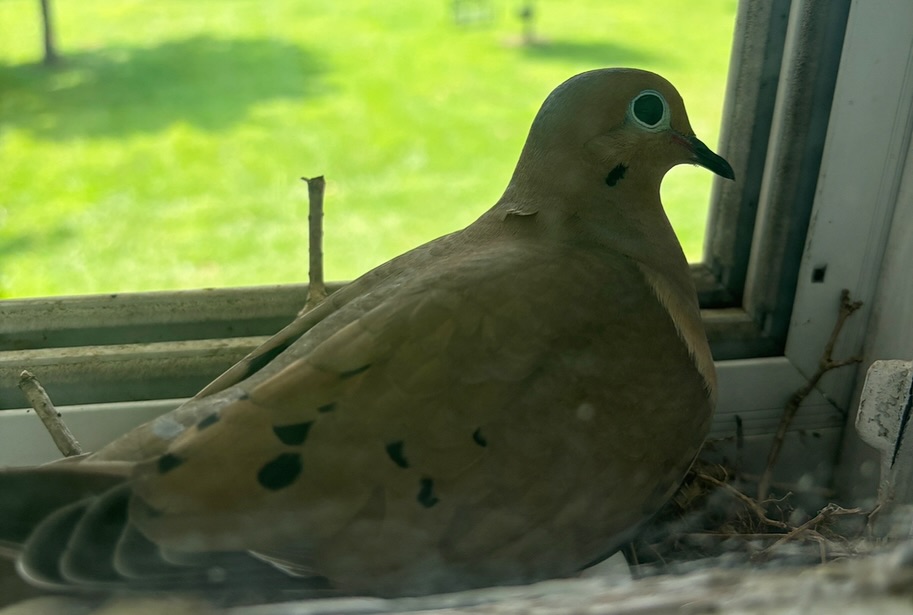Birds are known for their extraordinary ability to quickly build nests to raise their young. Using materials from delicately picked spider webs, paper thin grass fibers, and heavy tree branches, our avian friends construct nests of all shapes, sizes, and styles. Some birds, however, haven’t quite nailed down the building part when it comes to raising young and establishing a nest.
Mourning Doves (Zenaida macroura) are famously known for their lazy nest building, and they will sometimes use old, abandoned robin, wren, and nests to lay eggs. Males are usually in charge of gathering nesting material, while the female builds, laying a few sticks loosely in trees, gutters, windowsills, or any area they feel is safe from predation. Despite their weak nest construction, with the right conditions Mourning Doves can lay up to 6 broods of eggs per year.

Mourning Doves have become exceptionally adapted to urban spaces, being found in backyards, suburbs, parks, and cities. In more natural settings, they prefer open woodlands and grasslands. Seeds make up the entirety of the Mourning Doves diet, with small insects and fruits rarely being consumed. This makes areas with bird-seed feeders especially attractive to these adaptable birds, who feed along the ground bobbing their head back and forth as they browse piles of seeds. They are also known for their nostalgic slow flute-like call often heard at dawn and dusk, when they perch atop telephone wires to plan their busy days of feeding on neighborhood seed crops.

Check out this Mourning Dove nest here at Creasey Mahan in the Mahan Manor, with a few young birds approaching adulthood. You can see these birds around the entire preserve, and a close look can be achieved at our bird blind when we put bird seed out for them to eat. When seen up close, you may notice their gorgeous blue eye rings, pink feet, and bright white tail feathers.

